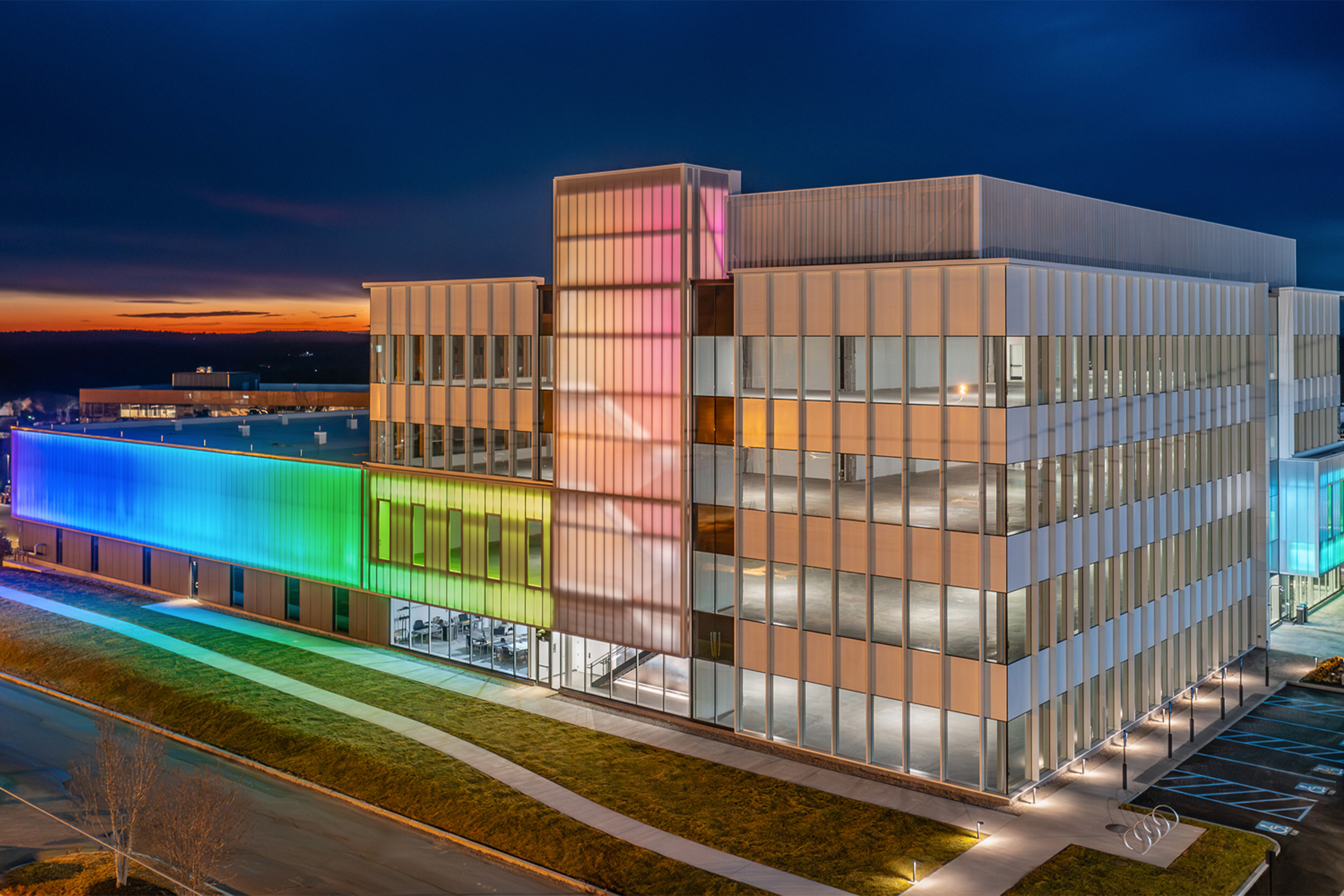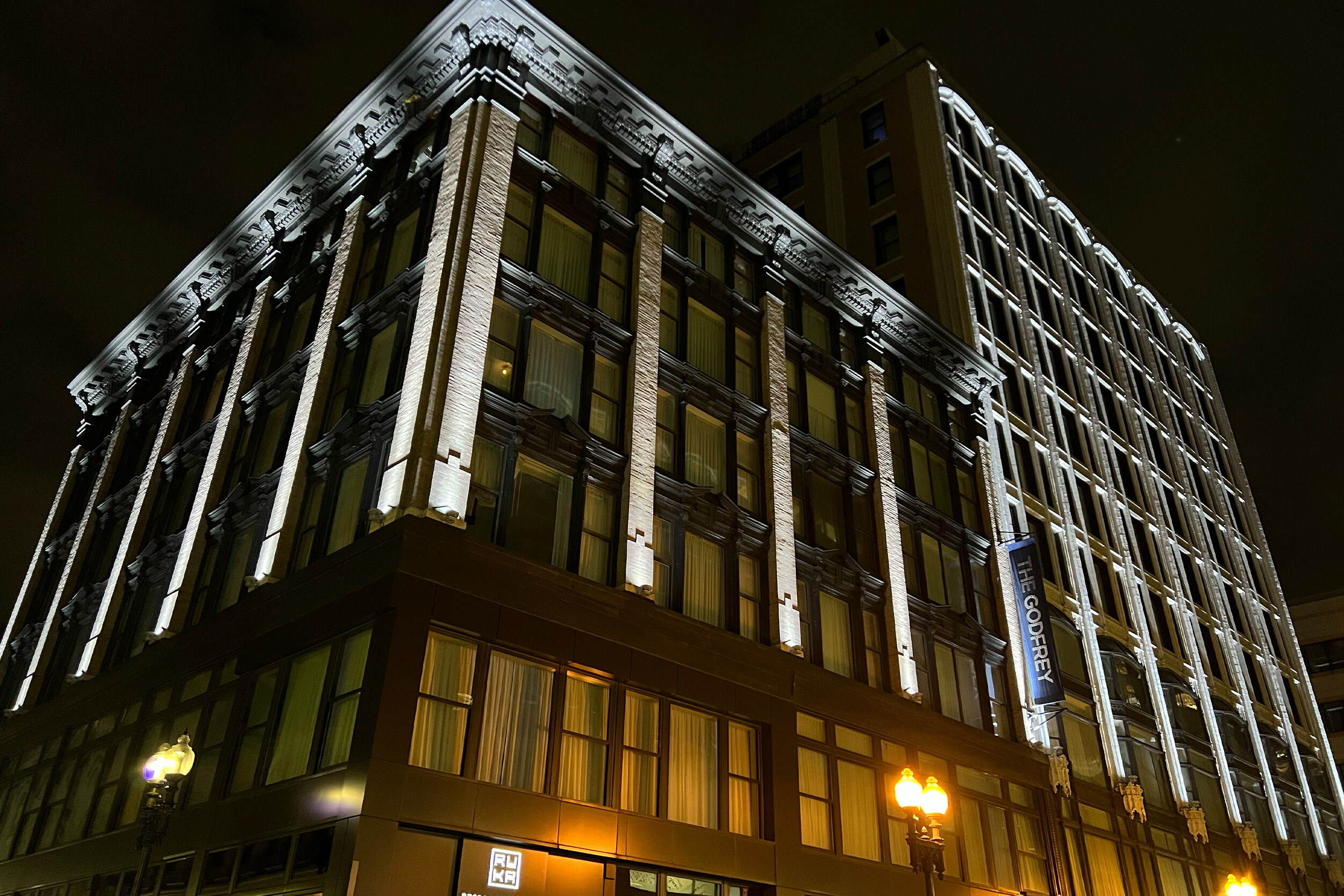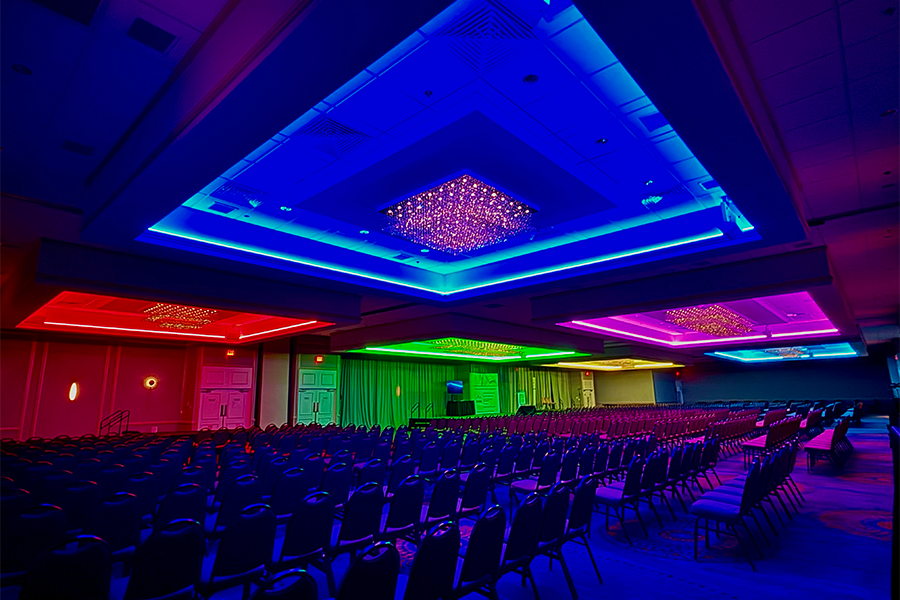Architectural Lighting Solutions
Exterior and interior, we light it all—city bridges, stadiums, skyscrapers, theaters, casinos, amusement rides, museums, TV studios… We can’t wait to get started.
Our Architectural Lighting Solutions Include:
We’re first to admit there are a lot of great Lighting Solutions out there. What sets Port apart: we offer architectural lighting design services and architectural lighting installation solutions with custom designs and color-changing systems—exceedingly rare in our field. This combined experience means we know ahead of time which specified lighting fixtures will function properly within a designed system—saving our clients from costly mistakes, project delays, and systems that just won’t work (if your project already falls into this category—not to worry, we can fix it).
At PORT, we get it right the first time. Every time. That’s because our designers are also installers. Our team boasts the technical know-how and years of experience to advise specific fixtures and create truly breathtaking, fully customized, architectural lighting systems with controls your team can easily, and remotely operate. If your project calls for sustainable design, daylighting, light-harvesting, human-centric lighting, or dark-sky compliance, we’re ready to implement any of the above into your one-of-a-kind architectural lighting system.
The sooner you bring PORT aboard your project, the more smoothly its lighting aspect will flow, and the more money we can help you save. Whether we’re tasked with design, installation, or both, we’re honored to be among your partners through the collaborative design-build process.

103 CityPoint - Waltham, MA
Learn more about our work at 103 CityPoint, and the importance of architectural lighting integration, programming, and lighting controls.
.webp?width=2500&height=1667&name=One%20Financial%20Center%20(1).webp)
One Financial Center- Boston, MA
Learn how our team designed, installed, and programmed One Financial Center in Boston, MA from Boston Magazine.
.webp?width=2500&height=1667&name=TD%20Garden%20Lights%20(1).webp)
TD Garden Lighting Installation
Our team provided lighting installation, controls, and integration of the interior lighting at TD Garden.

Robe Lighting & PORT - Godfrey Hotel - Boston, MA
Learn details on this incredible lighting installation from our VP of Architectural & Theatrical Lighting Ron Kuszmar and our Partners at Robe Lighting.
-1.webp?width=958&height=638&name=Canal%20Street%20Tower%20(1)-1.webp)
Canal Street Towers - Holyoke, MA
PORT provided comprehensive architectural lighting solutions and works including design/installation for retired electrical towers.
Interested in working with us?
We can't wait to hear from you.
What is Lighting Design?
Architectural lighting design encompasses the process of deliberate and strategic planning of fixtures and systems within architectural spaces to achieve specific aesthetic, functional, and atmospheric objectives.
Elements included in the design process are:
- Concept Development
- Mockups/Lighting Design Plan
- Fixture Selection
What Is The Process of Lighting Design?
The design process begins with the need to define and understand the goals and objectives for the lighting design. It is important to understand the function of the space, the look that is wanted, as well as energy efficiency and any budget constraints.
Once this project goal is defined, a site analysis for existing construction is conducted. This site analysis considers factors including but not limited to daylight, natural surroundings, and architectural features.
Determining these features ahead of time allows consideration of how the artificial lighting will complement and interact with the architecture. After a site analysis comes a need to understand the architecture. It is key that a designer identifies key design elements, materials, as well as any unique features that should be highlighted or concealed.
Once the architecture is understood, the designer will identify the functional lighting requirements for each area within the space. This can include task lighting for specific activities, general illumination, or accent lighting to highlight specific features.
After a functional analysis, the designer will typically create a lighting plan. This plan will outline the type, quantity, and location of fixtures as well as specify desired light levels, color temperature, and angles for each individual fixture. Lighting fixtures are chosen to ensure that they meet the design and performance criteria of the design. Color rendering and temperature also go into the fixture selection.
A lighting control system will need to be designed as well to allow for flexibility and adaptability. This control can include dimming, zoning, and scene setting to create different lighting looks.
What is Lighting Installation?
Architectural lighting installation encompasses the process of designing, positioning, and installing lighting fixtures and systems within a building or outdoor space to enhance its aesthetic appeal, functionality, and overall ambiance.
The role of an architectural installer includes installing lighting fixtures and systems while working closely with design plans to ensure the correct positioning of fixtures as well as ensuring that the lighting systems function correctly and meet all specifications.
Elements included in the installation process are:
-
Installation of Fixtures
-
Wiring & Connection of Fixtures
-
Control System Integration
-
Client Training & Post-Installation Support
What Is The Process of Lighting Installation?
The installation process typically starts with the creation of a lighting design and a completed site assessment. These are imperative when understanding what is needed to complete any architectural installation. Once the installation concepts are confirmed, material and equipment procurement is necessary.
This encompasses the ordering of lighting fixtures, controls, as well as any other necessary equipment to ensure that all materials meet project specifications and quality standards.
After all needed materials are acquired, the site will need to be prepared by ensuring all areas are clear and safe to work. Once safety conditions are ensured, the installation can begin. Installation includes the mounting of all lighting fixtures in their designated locations as well as wiring all fixtures to the electrical system. Once they are wired, a control system and sensors are installed and tested to ensure fixtures are correctly aligned, anchored, and the desired lighting effects are achieved.
After all fixtures are working well, the installer will program and configure the lighting control system to achieve specific lighting scenarios and automation sequences. This process can include testing control interfaces, timers, dimmers, and sensors to ensure proper functionality. Once the installation is complete, the installation company typically will provide training to end-users or building operators on how to operate and maintain the lighting system as well as offer guidance on troubleshooting any potential problems.
Once this training is complete, most installers will be available for ongoing support including but not limited to maintenance, repairs, or replacements as needed.





.webp?width=2500&height=1667&name=View%20Boston%20(1).webp)

.webp?width=2500&height=1664&name=Boston+TD+Garden+Exterior+Lighting%20(1).webp)
.webp?width=2500&height=1667&name=008_5291_teuten%20(2).webp)
